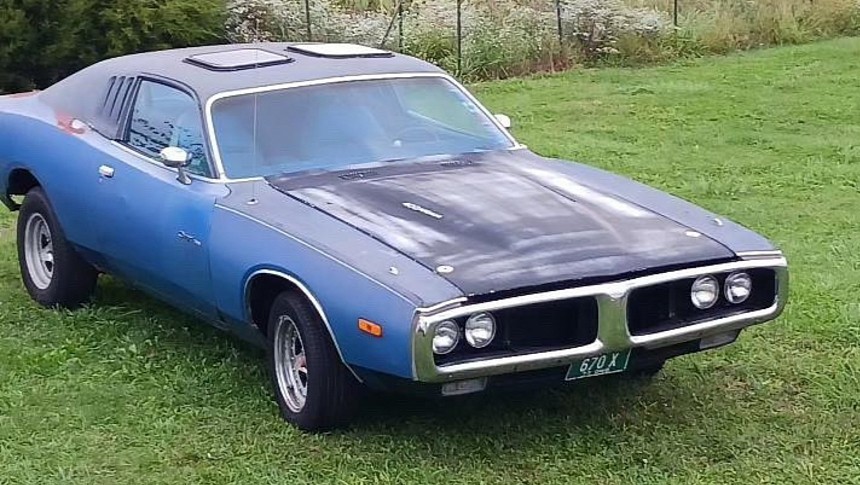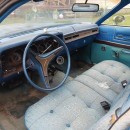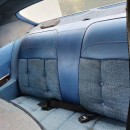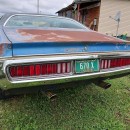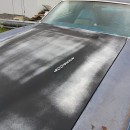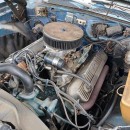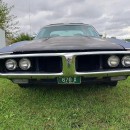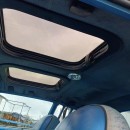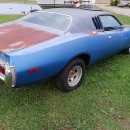The Charger became an international superstar when Steve McQueen chased one in Bullitt. The legend has it that the Mopar was too fast for the Mustang. In Hollywood fashion, the baddies in the Dodge had to slow down to give the Ford a fighting chance. Dodge changed generations for the emblematic muscle car in 1971, giving it a completely new styling – some argue the best of all Chargers ever.
Precisely half a century ago, Mother Mopar was having one of its best Dodge years for the muscle car segment. That malevolent moment coincided with the best sales results for the iconic Charger, with almost 120,000 made. The vast majority of them were the higher-trim SE models, with nearly 62,000.
But only a handful of those had the sunroof option - 2,500 Chargers came with the sliding top panel above the front seats. Of course, the aftermarket offered the option of adding a skylight, and the customer could make his Charger unique.
Like putting a pair of individual panels above the bucket seats – check the gallery for a visual display of one. Installed on a 1973 big-block-powered Dodge Charger SE, the two-section sunroof puts a touch of rarity on this otherwise familiar Mopar.
I refer to the magnificent Charger as standard only from the production numbers perspective. The classic automobile was Dodge’s spearhead against the likes of HiPo Mustangs and COPO Chevys. In ’73, the Charger significantly differed from its predecessors, having gained seven inches in overall length (177 mm).
Despite the increase in length, the car’s profile firmly left the impression of a long hood/short deck design. The sportiness was backed visually by the sloping rear window and trunk – a feature inherited from the previous model years of the third generation (which lasted from 1971 to 1974).
Eleven individual louvers on each tail lamp were assembled inside the rear bumper to barely leave space for the license plate. The ’73 Charger was longer, wider, and slightly taller than its generation siblings, but it also got the merciless engine down-tune.
The V8-hatred era was kicking in when this Charger SE came around. Hence, the HEMI was no more, and the mighty 440 was deprived of its Magnum title and stripped of its six-pack firepower. Even so, Chrysler did its piston best to make the Charger look muscular and feel like it was still accustomed to regular exercise.
The 440-cubic inch V8 (7.2-liter) was the most powerful option left for nostalgic buyers, albeit with a meager 280-hp and 375 lb-ft (284 PS / 508 Nm) dowry from its four-barrel Carter AFB carburetor. The other performance option was the trusty 400 CID (6.6-liter) V8 with a four-throat carb that would fire 260 hp (264 PS) and 335 lb-ft (454 Nm) to the rear wheels.
An excellent telltale detail about the high-performance 400-cubes V8 in the ’73 Charger was the dual machine gun muzzle exhaust pipes. Four barrels up front, and two at the back, below the massive cutaways of those overconfident rear lights.
One of those special Chargers is offered for sale in West Unity, Ohio. Said to be a runner and immediately daily-able, this particular Mopar has the aforementioned dual sunroof setup (a custom job from one of its past owners) and a bunch of front-end goodies.
The reliable 400-CID V8 is linked to an automatic three-speed (the bullet-proof TorqueFlite 727) and has a 3.55:1 Sure Grip Rear end. The modifications the seller lists include Vortec 906 heads, an Edelbrock aluminum intake manifold, a.455-inch valve-lift cam, headers, and electronic cut-outs.
The current owner – a Mopar loyalist down to his Plymouth Valiant convertible (which he drives regularly) and the ’73 D200 pick-up truck – has enjoyed this Dodge for 15 years. According to him, the car has all it takes to be driven as-is or upgraded to convenience, and the asking price of $11,000 is more than attractive.
But only a handful of those had the sunroof option - 2,500 Chargers came with the sliding top panel above the front seats. Of course, the aftermarket offered the option of adding a skylight, and the customer could make his Charger unique.
Like putting a pair of individual panels above the bucket seats – check the gallery for a visual display of one. Installed on a 1973 big-block-powered Dodge Charger SE, the two-section sunroof puts a touch of rarity on this otherwise familiar Mopar.
Despite the increase in length, the car’s profile firmly left the impression of a long hood/short deck design. The sportiness was backed visually by the sloping rear window and trunk – a feature inherited from the previous model years of the third generation (which lasted from 1971 to 1974).
Eleven individual louvers on each tail lamp were assembled inside the rear bumper to barely leave space for the license plate. The ’73 Charger was longer, wider, and slightly taller than its generation siblings, but it also got the merciless engine down-tune.
The 440-cubic inch V8 (7.2-liter) was the most powerful option left for nostalgic buyers, albeit with a meager 280-hp and 375 lb-ft (284 PS / 508 Nm) dowry from its four-barrel Carter AFB carburetor. The other performance option was the trusty 400 CID (6.6-liter) V8 with a four-throat carb that would fire 260 hp (264 PS) and 335 lb-ft (454 Nm) to the rear wheels.
An excellent telltale detail about the high-performance 400-cubes V8 in the ’73 Charger was the dual machine gun muzzle exhaust pipes. Four barrels up front, and two at the back, below the massive cutaways of those overconfident rear lights.
The reliable 400-CID V8 is linked to an automatic three-speed (the bullet-proof TorqueFlite 727) and has a 3.55:1 Sure Grip Rear end. The modifications the seller lists include Vortec 906 heads, an Edelbrock aluminum intake manifold, a.455-inch valve-lift cam, headers, and electronic cut-outs.
The current owner – a Mopar loyalist down to his Plymouth Valiant convertible (which he drives regularly) and the ’73 D200 pick-up truck – has enjoyed this Dodge for 15 years. According to him, the car has all it takes to be driven as-is or upgraded to convenience, and the asking price of $11,000 is more than attractive.
